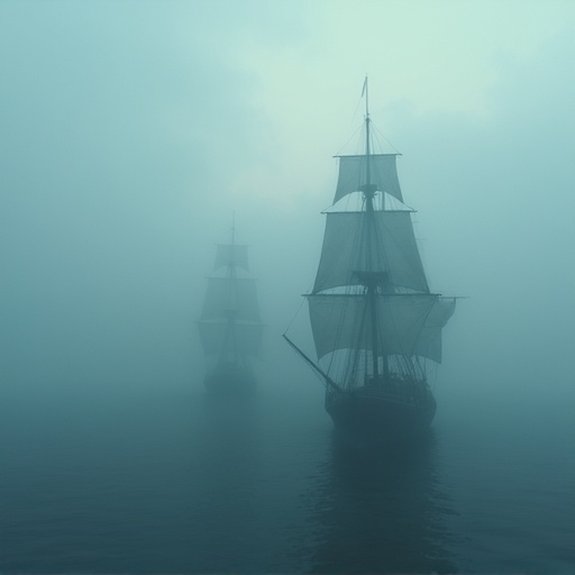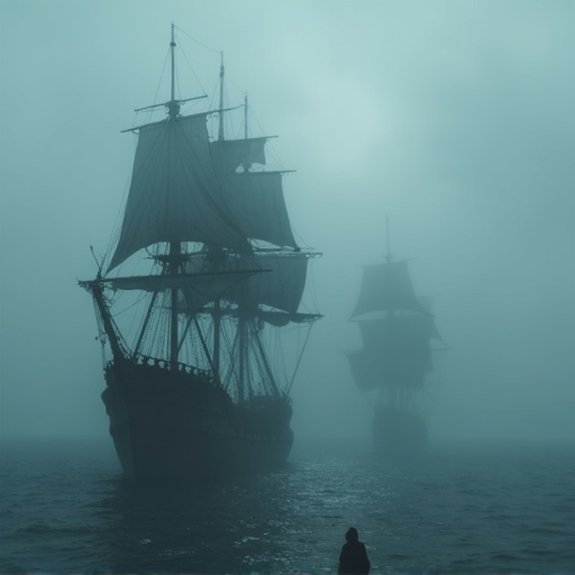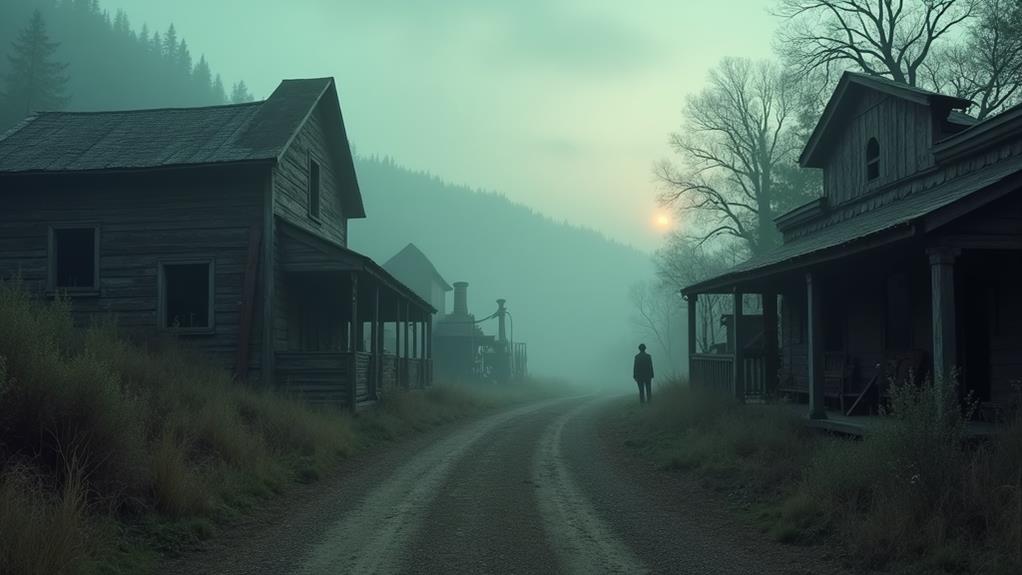Ghost Ships in the Fog: Sailing Phantoms
The fog rolled across the North Atlantic when the merchant vessel’s crew spotted something impossible—a fully rigged schooner sailing without anyone at the helm. They’d witnessed what sailors have reported for centuries: ghost ships drifting through maritime history‘s most unsettling chapters. These phantom vessels aren’t just nautical folklore. They’re documented encounters that challenge rational explanation and reveal how the ocean’s mysteries continue to haunt modern shipping lanes.
Introduction

When thick fog rolls across the ocean, sailors’ imaginations run wild with tales of phantom vessels drifting through the mist. These ghost ships have haunted maritime folklore for centuries, appearing as spectral silhouettes that vanish when approached. They’re reported worldwide, from the Flying Dutchman off South Africa’s Cape of Good Hope to the Baychimo trapped in Arctic ice.
Some witnesses describe fully rigged sailing ships with tattered sails and no crew. Others report modern vessels that shouldn’t exist in those waters. These sightings aren’t limited to superstitious sailors from bygone eras. Contemporary mariners, coast guard personnel, and passengers on cruise ships continue reporting mysterious vessels that defy explanation. Whether they’re optical illusions, misidentified objects, or something more supernatural, ghost ships remain one of the sea’s most enduring mysteries.
Ancient Maritime Superstitions Emerged
Long before modern navigation systems guided ships across treacherous waters, sailors developed elaborate belief systems to explain the unexplainable phenomena they encountered at sea. These maritime cultures, from Mediterranean traders to Viking raiders, shared remarkably similar superstitions about spectral vessels appearing in fog banks.
Ancient Greek sailors spoke of ships crewed by the dead, eternally sailing toward unreachable harbors. Roman naval records described phantom galleys that’d vanish when approached. Norse sagas warned of draugr ships—vessels helmed by undead warriors who’d drag living sailors to watery graves.
These beliefs weren’t mere entertainment. They served practical purposes: explaining disappearances, warning against dangerous waters, and providing codes of conduct. Sailors who’d witnessed ships vanishing in fog or heard unexplained sounds across calm waters needed explanations their world could provide.
Notable Cases or Sightings

Since the dawn of maritime record-keeping, certain ghost ship encounters have transcended local legend to become internationally recognized phenomena. The Flying Dutchman remains history’s most documented phantom vessel, with credible sightings reported by Britain’s King George V in 1881 and multiple Royal Navy crews throughout the 19th century.
The Mary Celeste‘s 1872 discovery drifting unmanned near the Azores sparked enduring mystery. Her crew’d vanished without explanation, leaving meals half-eaten and cargo untouched. Modern cases include the SS Baychimo, spotted empty but intact along Alaska’s coast from 1931 to 1969, and the Lyubov Orlova, a Russian cruise liner that’s allegedly appeared as a ghost ship since breaking free from tow in 2013.
Common Theories or Explanations
While believers insist these spectral vessels defy scientific explanation, researchers have identified several natural phenomena that create convincing ghost ship illusions. Temperature inversions can bend light rays, projecting images of distant ships above the horizon where they shouldn’t appear. This atmospheric mirage, called Fata Morgana, distorts vessels into towering, otherworldly shapes.
Fog banks themselves play tricks on sailors’ eyes. Dense mist amplifies sounds while obscuring vision, making nearby ships seem impossibly far or creating phantom echoes. St. Elmo’s fire—electrical discharge during storms—produces eerie glowing effects on masts and rigging.
Psychologists point to pareidolia, the brain’s tendency to perceive familiar patterns in random stimuli. Combined with maritime folklore and exhaustion from long voyages, sailors’ minds transform ordinary sights into supernatural encounters.
Frequently Asked Questions
Can Modern Radar and Sonar Technology Detect Ghost Ships?
Modern radar and sonar can’t detect ghost ships since they’re supernatural phenomena without physical mass. These technologies only identify solid objects that reflect electromagnetic or sound waves. Witnesses claim ghost ships don’t register on instruments.
What Should You Do if You Encounter a Ghost Ship?
If someone encounters a ghost ship, they shouldn’t approach it. They’d best document the sighting with photos, note their coordinates, and report it to maritime authorities. They’ll investigate whether it’s an abandoned vessel or optical illusion.
Are Ghost Ship Sightings More Common in Specific Months or Seasons?
Sailors report most ghost ship sightings during autumn and winter months when fog’s thickest. October through February sees peak encounters, as maritime historians’ve documented. Cold weather creates atmospheric conditions that enhance both real mirages and mysterious appearances.
Do Ghost Ships Appear in Lakes and Rivers or Just Oceans?
Ghost ships don’t limit themselves to oceans. Witnesses report phantom vessels on the Great Lakes, especially Lake Superior’s Edmund Fitzgerald, and rivers like Germany’s Rhine. These inland waters harbor their own spectral maritime legends.
Have Any Ghost Ships Been Successfully Photographed or Filmed?
People’ve claimed to photograph ghost ships, but experts haven’t verified any as authentic supernatural phenomena. Most supposed evidence shows mirages, fog illusions, or hoaxes. Scientists explain these sightings through natural optical effects rather than paranormal activity.


